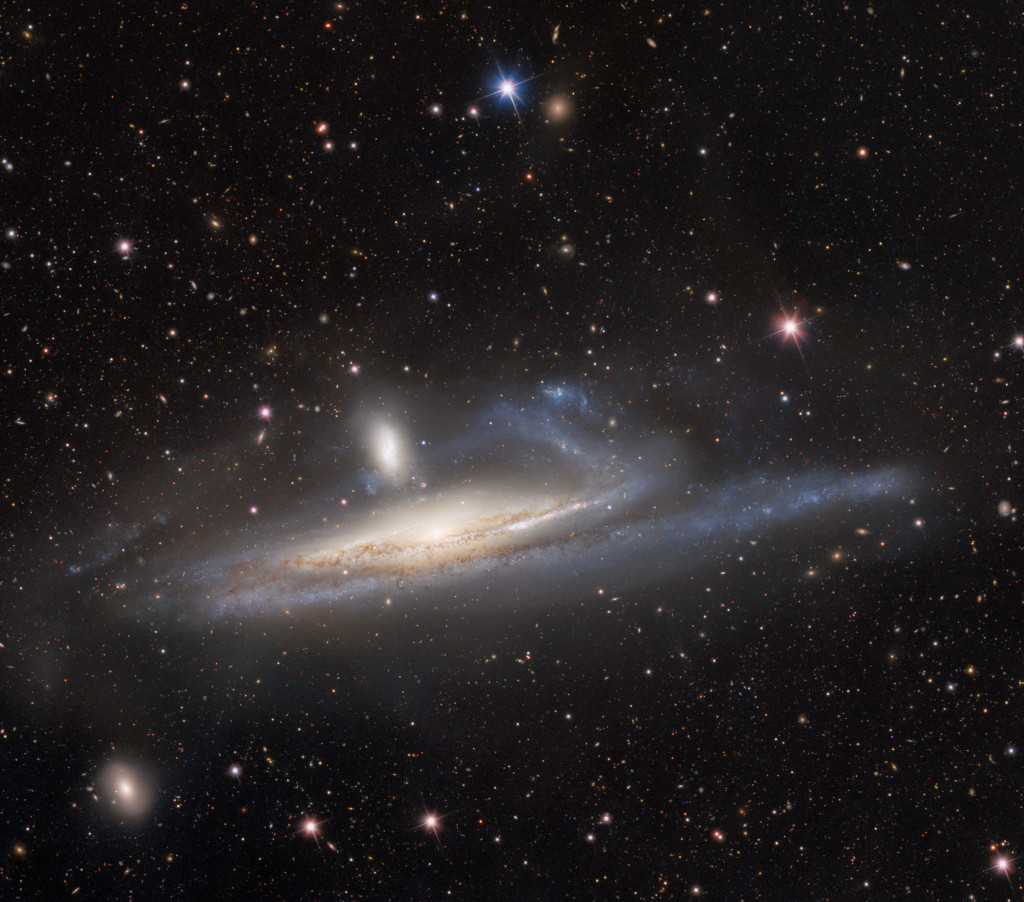波江座的星系
2023年7月27日
Galaxies in the River
Image Credit & License: CTIO/NOIRLab/DOE/NSF/AURA; R. Colombari, M. Zamani & D. de Martin (NSF’s NOIRLab)
Explanation: Large galaxies grow by eating small ones. Even our own galaxy engages in a sort of galactic cannibalism, absorbing small galaxies that are too close and are captured by the Milky Way’s gravity. In fact, the practice is common in the universe and illustrated by this striking pair of interacting galaxies from the banks of the southern constellation Eridanus, The River. Located over 50 million light years away, the large, distorted spiral NGC 1532 is seen locked in a gravitational struggle with dwarf galaxy NGC 1531, a struggle the smaller galaxy will eventually lose. Seen nearly edge-on, spiral NGC 1532 spans about 100,000 light-years. The merging galaxies are captured in this sharp image from the Dark Energy Camera mounted on the National Science Foundation’s Blanco 4-meter Telescope at Cerro Tololo Inter-American Observatory in Chile. The NGC 1532/1531 pair is thought to be similar to the well-studied system of face-on spiral and small companion known as M51.
Tomorrow’s picture: pixels in space
波江座的星系
影像提供与授权: CTIO/NOIRLab/DOE/NSF/AURA; R. Colombari, M. Zamani & D. de Martin (NSF’s NOIRLab)
说明: 大星系靠吞食小星系来成长。就连我们的银河系,也是星系吞食行为的信奉者,靠得太近、被银河系引力捕获的小星系,会被银河系合并。在宇宙中,星系吞食的现象非常普遍,上面这对位在南天波江座方向的星系对就是很好的例证。这对离我们5千多万光年远的星系,较大的扭曲螺旋星系NGC 1532,正透过引力和矮星系NGC 1531进行引力缠斗,而对小星系来说,这是一场毫无胜算的战争。侧向着我们的螺旋星系NGC 1532,大小约有100,000光年。这对合并中星系的清晰影像,是由安装在智利托洛洛山美洲天文台(CTIO)美国国家科学基金会布蓝柯4米望远镜上的暗能量相机所拍摄。NGC 1532/1531星系对,咸认和我们很熟悉的正向螺旋星系对M51很类似。
明日的图片: pixels in space

